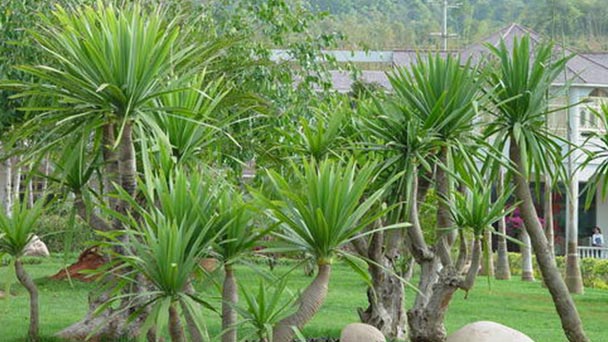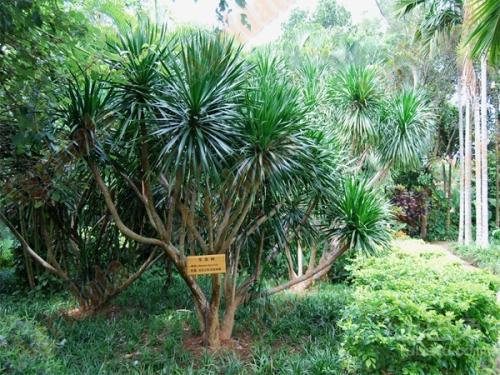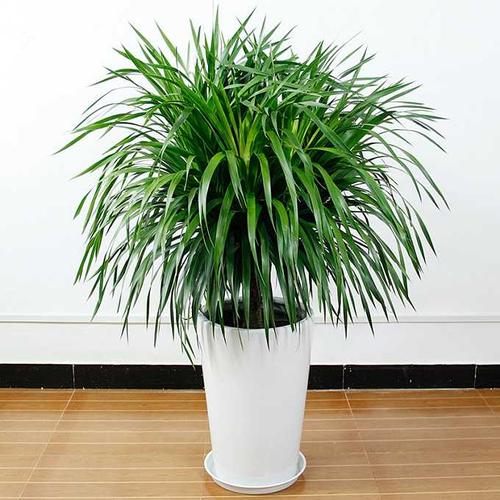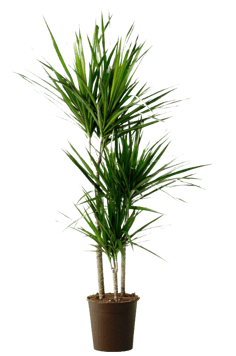Dracaena profile
Written by Maggie
Sep 09 2021

Dracaena is a small evergreen shrub in the liliaceae family. It is said that in ancient times, when the dragon fought with the elephant, the dragon's blood spilled on the ground. Later, Dracaena was born out of the soil. When Dracaena is damaged, it emits a dark red, plasma-like slime -- what legend has it was dragon blood. Hence the name Dracaena. Dracaena Dracaena was listed as a class II rare and endangered plant by the State in 2001, and included in the Red Book of Chinese Plants -- Rare and Endangered Plants.
Dracaena picture

Morphological characteristics of Dracaena
Dracaena is an evergreen shrub, up to 4m tall, and its skin is gray. Leaves are sessile, dense at stem tip, thick papery, broadly striate or oblanceolate, 10~35cm long, 1~5.5cm wide, base extended classe, near base narrower, midrib lower part obvious, costal, terminal large panicle up to 60cm long, 1~ 3 clusters. The flowers are white and fragrant. The berries are globular yellow.
Dracaena growth habit
Dracaena is fond of high temperature and humidity, light, sufficient light and colorful leaves. Dracaena is not cold resistant. In winter, the temperature should be about 15℃, the lowest temperature of 5~10℃. If the temperature is too low, yellowish brown patches will appear on the tip and blade edge due to insufficient water absorption of the root system. Dracaena prefers loose, well-drained soil with rich humus nutrients.
Dracaena distribution area
Dracaena Dracaena is distributed in southern China and tropical Asia.

Dracaena - Most Common House Plant
Dracaena propagation methods
Dracaena is generally used to propagate cuttings. In May to June is appropriate. We can choose robust branches for more than two years to grow, each section is about 10-20 cm long. The base of the cuttings is cut into a flat mouth, the upper part of the cuttings is cut horizontally and the leaves are kept. The upper and lower incisions can be soaked with water to clean the spilt juice, and the cuttings are placed in a cool and ventilated place for a period of time. Then, the cuttings are soaked in a 2-3cm place with 500-1000ppm naphthalene acetic acid, generally 5 seconds, followed by insertion. Nursery beds can use small earthen pottery flower pots, matrices can use vermiculite, perlite or the plain sand that passes high temperature disinfection. Each pot of a plant, inserted after pouring a permeable, seedling bed placed in the light of the flowers, careful maintenance, after the main is to keep the substrate wet. In general, 25 to 35 days, under the action of endogenous hormones, cuttings can soon appear in the original root body, 35 to 40 days can germinate new roots. After two months, it can be used to cultivate soil to turn over pot transplanting.
The main use of Dracaena
Used for viewing: Dracaena plants are graceful and orderly, with colorful leaves. It is a fine ornamental plant for modern interior decoration. Medium and small potted flowers can adorn the study, living room and bedroom, and large and medium-sized plants can beautify and decorate the hall.
Medicinally: Dracaena exudes a blood-colored fluid after being injured. The liquid, a dark red resin, is used in a rare Chinese medicine known as "blood dried" or "kiln dried" to treat painful muscles and bones. The resin of Dracaena was also used to preserve the dead because it was a good preservative. It is also used to make paint.

Latest Updated
- Benefits of Bugleweed - 7 Science-backed Health Benefits
- Bugleweed Dangers & Side Effects - Is It Poisonous?
- How to Plant Evergreen Trees - What You Should Know
- When to Plant Evergreens - Grow Guide for Evergreen Trees
- 12 Wonderful Evergreen Shrubs for Your Garden
- 12 Popular Evergreen Plants with Pictures for Beginners
- When And How To Prune A Lilac Bush Like a Pro
- How to Grow & Care for Lilac Vine (Hardenbergia Violacea)
- Japanese Lilac Tree (Syringa Reticulata) Care & Propagation Guide
- Shumard Oak Pros and Cons - What to Know
Popular Articles
- Winter maintenance of Antirrhinum Majus
- How to Grow Terminalia Mantaly Tree
- How to Grow and Care for Crossostephium Chinense
- How to grow Antirrhinum Majus in spring
- Peristeria Elata (Dove Orchid) Profile: Info & Care Guide
- Underwatered Snake Plant (Sansevieria Trifasciata) - Signs And How To Fix
- How to Care for Brazilian Jasmine Plant (Mandevilla Sanderi)
- How to Grow & Care for Graptopetalum Purple Delight in Summer
- Rosa Chinensis (China Rose): Plant Growing & Care Tips
- How to Care for Baby Sun Rose (Aptenia Cordifolia)